- supergoods
- Posts
- From bars to bizarre
From bars to bizarre
The full story of David's Protein drama
I’ve ignored it for long enough. Gold packaging? Meh. Ingredient controversy? Leave it to the dieticians. But now - now they’ve got my attention.
Because David isn’t just selling protein bars anymore. They’re selling cod.
This is the moment things get weird. And if I love anything, it’s when brands get fucking weird - there is truly nothing better.
Today’s deep dive: the full story behind David Protein - the gold wrapped protein bar launching fish fillets and why this might be the smartest marketing stunt in modern food.
Let’s go. This episode is called…
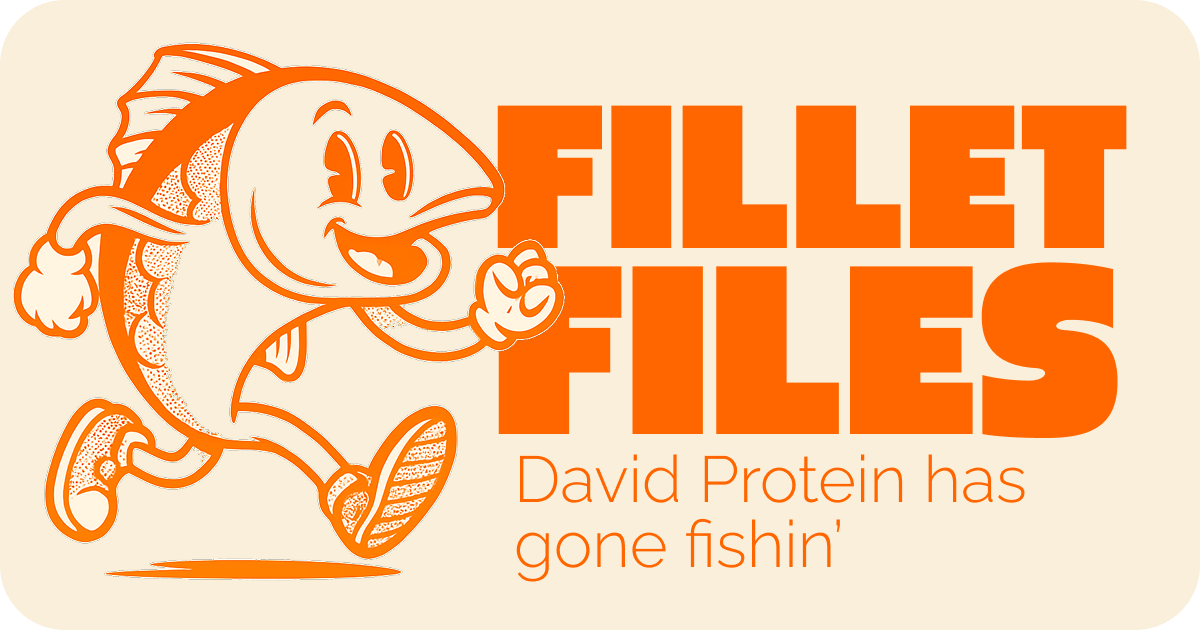
This edition of supergoods is brought to you by Mind Control

When should you hit F5? Time to refresh.

Superboost brand refresh by Mind Control
Deciding to refresh your brand is one of the biggest decisions you can make in the world of marketing.
Start with a different question: what problem are you trying to solve?
And the answer is not “sales”.
We teamed up with Superboost to deliver a full refresh - everything from brand identity to packaging execution.
They articulated the problem well: people didn’t know it’s a sports drink.
Hit the link below to see how we resolved it.
The statue, the science and the hype machine
David Protein was founded by Peter Rahal - the same guy who built RXBar and sold it to Kellogg’s for $600 million. He came back swinging, personally funding the launch of David with a $10M seed round and naming the brand after Michelangelo’s “David.” Because of course. Protein perfection as art. A Renaissance statue. In bar form.
The bar itself is, undeniably, a flex:
28g protein
0g sugar
150 calories
75% of calories from protein
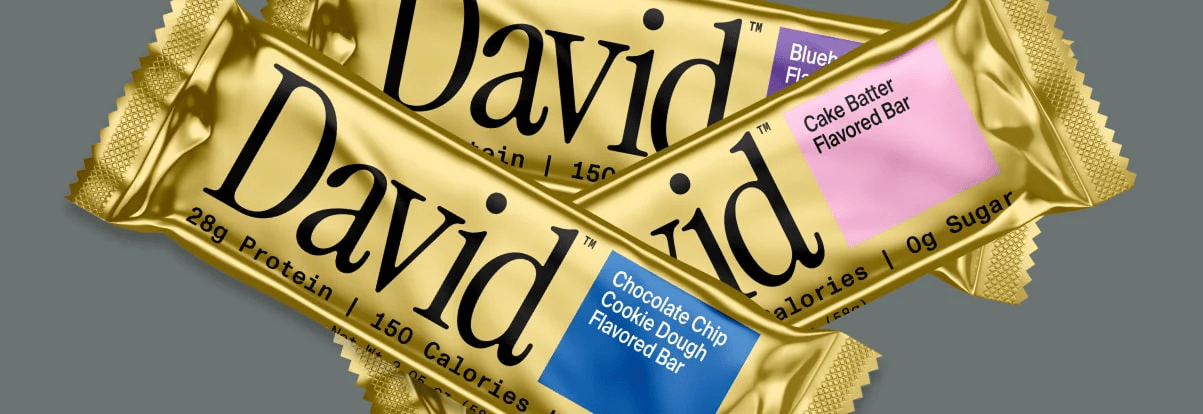
Image credit: David
That’s not just impressive. It’s absurd. Most bars cap out at 20g of protein and bring sugar along for the ride. David didn’t. They figured out how to cram the macros of a lean chicken breast into something that fits in your glovebox.
The trick? A lab-made fat substitute called EPG (esterified propoxylated glycerol) which is as natural as it sounds. It's made by a company called Epogee, and it acts like fat but isn't absorbed by your body the same way, so most of the calories just… don’t count. Like a diet Pepsi for food.
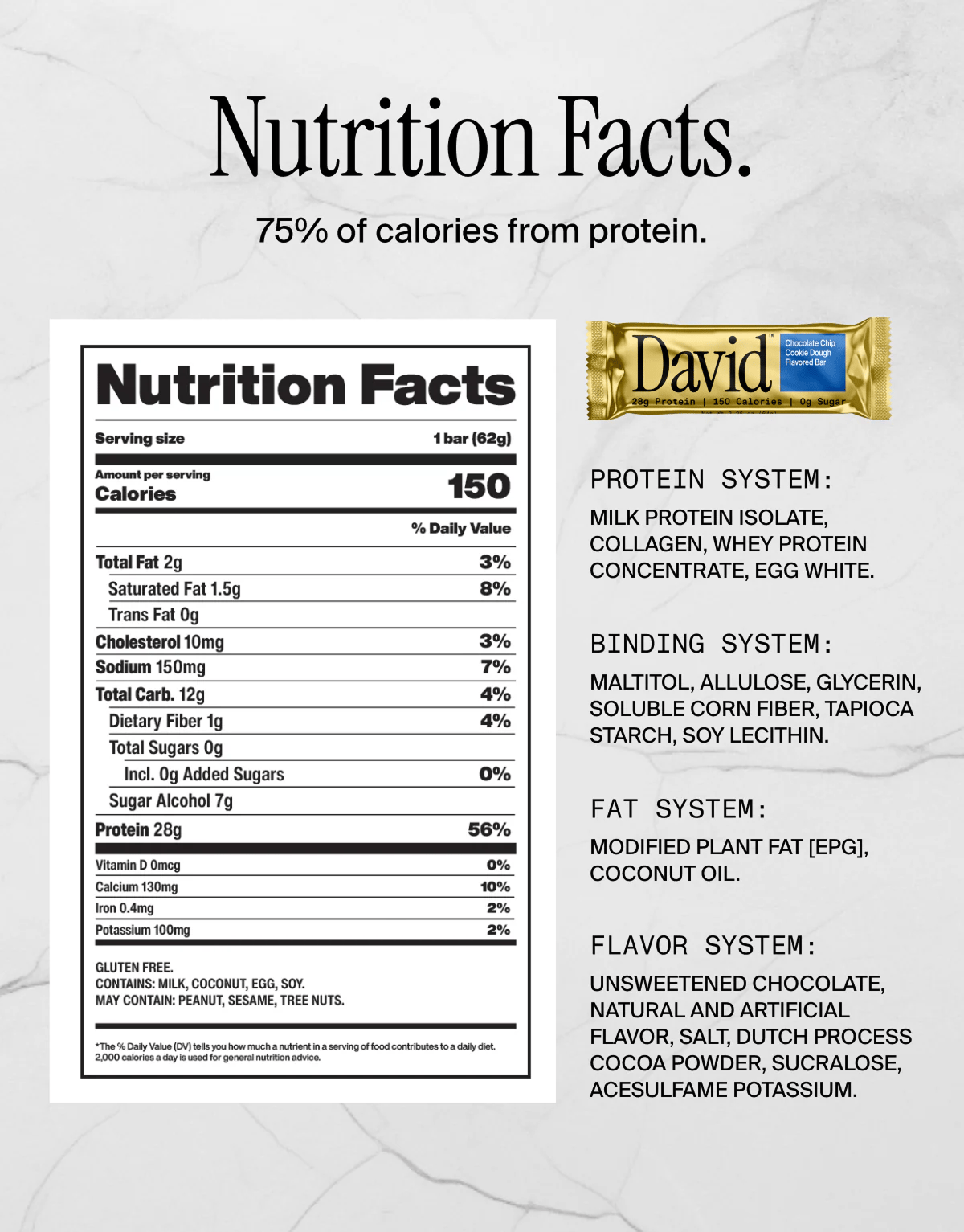 Image credit: David | David leaned into the “tech” vibes. Like this weird way of breaking down their ingredients into ‘systems’. It kind of sounds like a dystopian vending machine and reads like a white paper. But hey, it worked. People on TikTok lost their minds. Fitness nerds called it revolutionary. Investors threw money at it. |
Within a few months, they raised $75 million. At a $750M valuation. For protein bars.
Dial it up a notch
As the hype train barrelled forward, something quietly happened behind the scenes: Rahal’s team bought Epogee, the only company that makes EPG. And then (surprise emoji) David told every other brand using EPG that they could no longer buy it.
Cue lawsuits.
Multiple small food startups filed a federal antitrust suit in mid-2025, claiming David had pulled off a bait-and-switch: promising supply, encouraging product development, then suddenly cutting everyone off and stockpiling two years’ worth of EPG for themselves.
Translation: We found the cheat code. Then we locked the server.
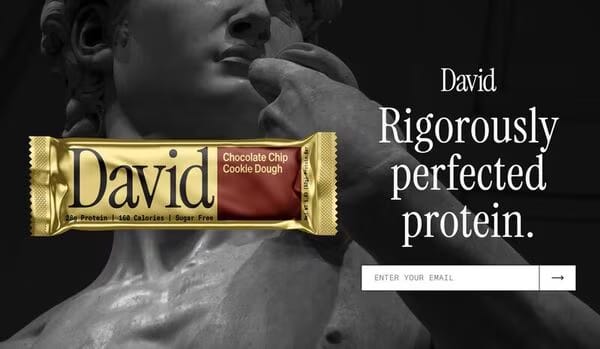
Image credit: David
David’s defence? They were 90% of Epogee’s revenue and needed to secure the supply chain. Valid point. But the way it was handled - zero transition, zero warning - left a trail of burnt bridges.
David went from "innovative" to "cutthroat" in record time. And in doing so, they stirred up a nutrition world that’s already tired of billion-dollar bros playing Hunger Games with functional food.
And now… Cod.
This week, the story evolved into something way more weird, and more interesting.
David dropped their next big launch: frozen wild-caught Pacific cod filets.
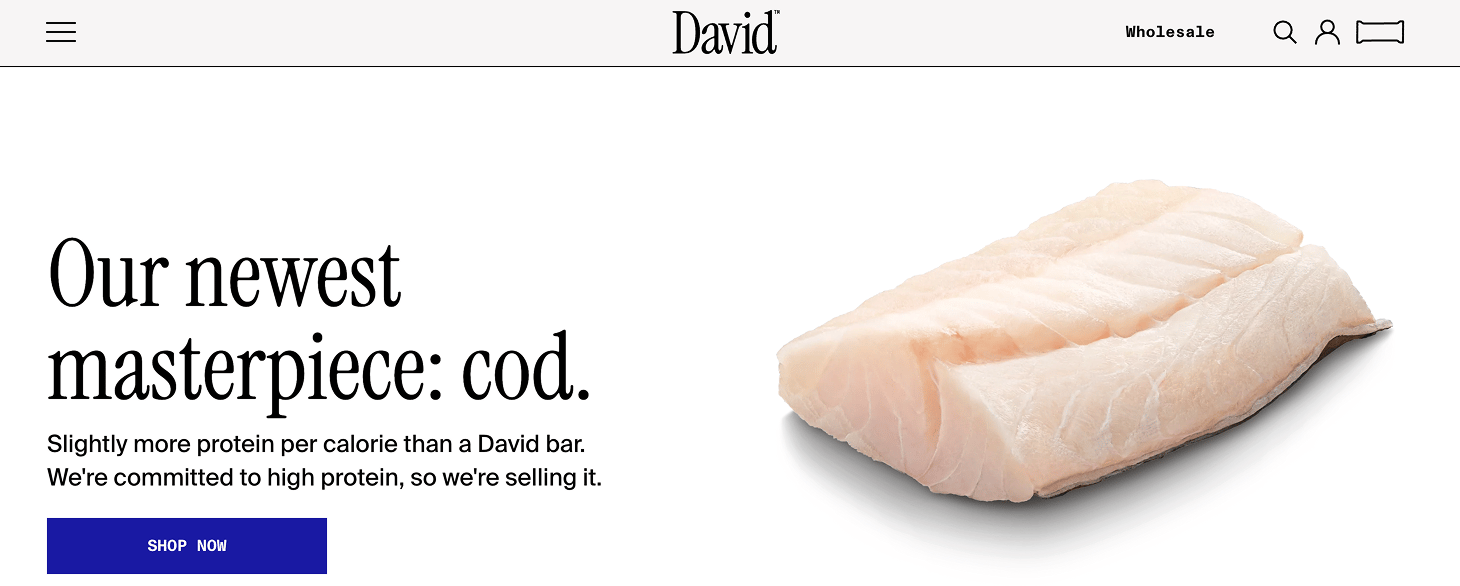
David website
Yes, actual fish. Four 6oz portions for $55. Shipped frozen with dry ice. Sold on their website. As in, right next to their bars. You know, for when you’re shopping for snacks and decide to impulse buy raw seafood.
It looked like a “relaunch”. They wiped clean their Instagram, started posting ambiguous ‘countdown to something big’ clips and went all in on abstract teaser posts.
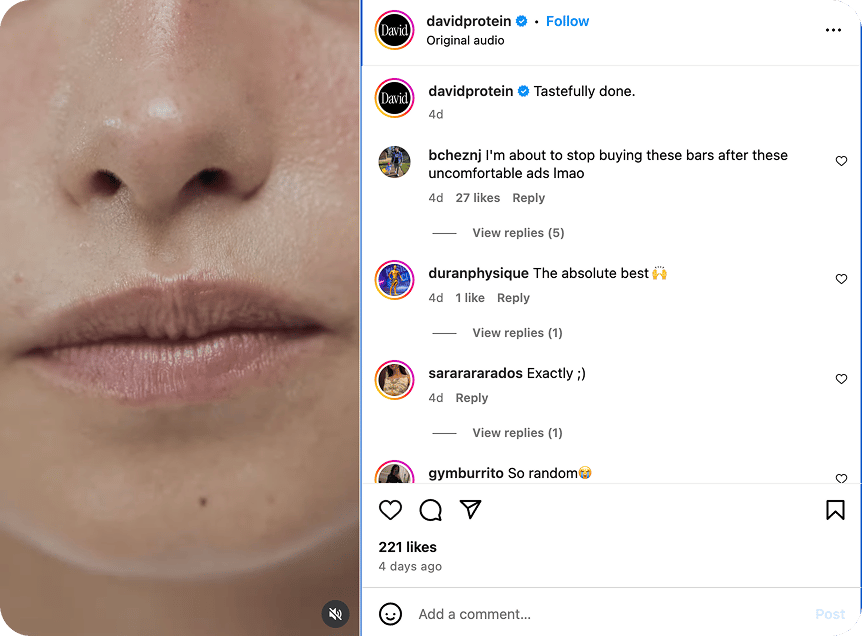
David Instagram
The launch video is designed to make you uncomfortable. Slightly erratic soundscapes. Close ups of sweat. Deadpan expressions. It’s all very odd and slightly dystopian. But one thing is for sure - it’s well executed.
Is it a real product? Technically, yes. You can buy it. You’ll receive it. There are detailed instructions on how to dispose of the dry ice.
But is it a real launch? Let’s not kid ourselves. This isn’t about cod.
This is positioning theatre.
By offering a pure, lean, unprocessed, uncontroversial source of protein (cod), they’re making a cheeky but pointed comparison: our bar is just as good as this. It reframes the narrative. Instead of arguing about lab-made fat, they’re saying, “We’re the fish. We’re nature’s benchmark.”
It’s a PR feint disguised as DTC seafood. And it’s working. The whole industry’s talking about David again - but not about EPG lawsuits or ingredient labels. About cod.
Signs that it’s a signal, not a pivot
OK so first up, the founders launch post on Linkedin is an immediate clapback at the controversy.
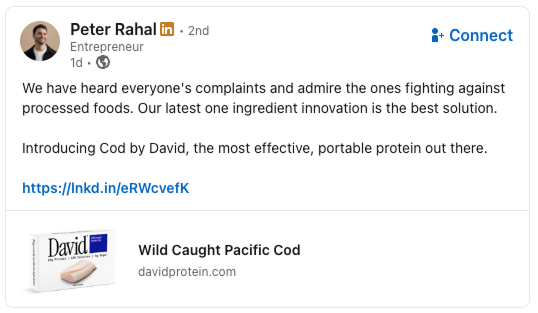
Peter Rahal Linkedin
But then it goes a level deeper.
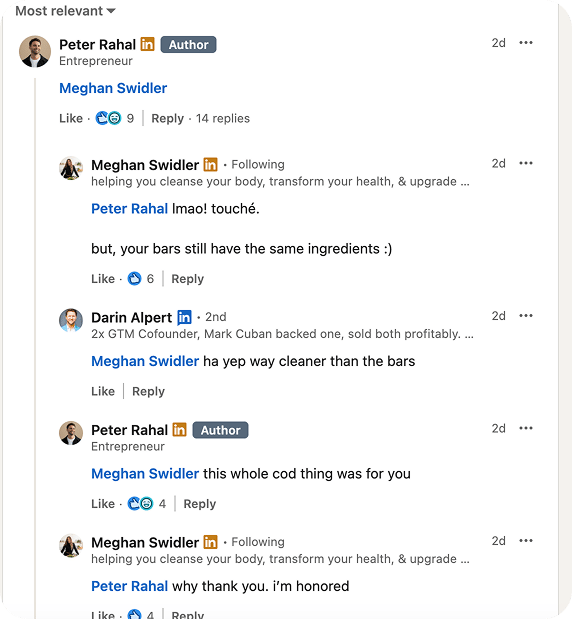 | Rahal tags one of the anti-David influencers in the post and claims “this whole cod thing was for you”. Someone else shares a screenshot where Rahal refers to Swidler as an “online antagonist” and drama & name callilng breaks out in the comments section. Some real popcorn worthy nonsense here. |
But if we ignore this shit-fighting, there is no way the fish is designed for scale.
Check out their FAQ’s. The fish is caught by an influencer called Kyle.
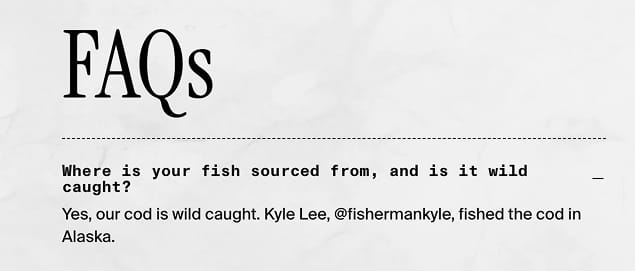
The cod isn’t meant to scale. The shipping costs are insane. The margins would be garbage. It’s not solving a real consumer problem. No one asked for it.
But it is funny. It’s just crazy enough to go viral. And it perfectly reinforces their single-minded obsession with protein.
This isn’t a pivot. It’s a brand flex.
So what’s the point in it all?
I think it’s about positioning & distraction.
They know what they’re doing for a ‘brand’ lens. Every move - from the name to the gold foil to the fish drop - is about signal. This brand was never trying to blend in. It was trying to win the internet.
But here’s the tension:
David sells itself as serious, science-backed nutrition. Clinical, effective, no fluff.
Yet it acts like a troll account with a media budget.
That’s either genius or exhausting. Possibly both.
The cod launch is one of the boldest stunts we’ve seen in CPG in years. Not because it’s shocking - but because it’s surgical. It resets the narrative. It puts the control back in their hands. And it reminds the world that in 2025, everything is content.
Will it lead to more bar sales? Probably.
Will they actually sell any fish? Doesn’t matter.
David’s not here to sell cod. They’re here to stay top of mind.
And they’ve just proven - again - that they know how to do that better than anyone.
What do you think?
What did you think of today's story?Click to vote, it helps us improve. |
Reply